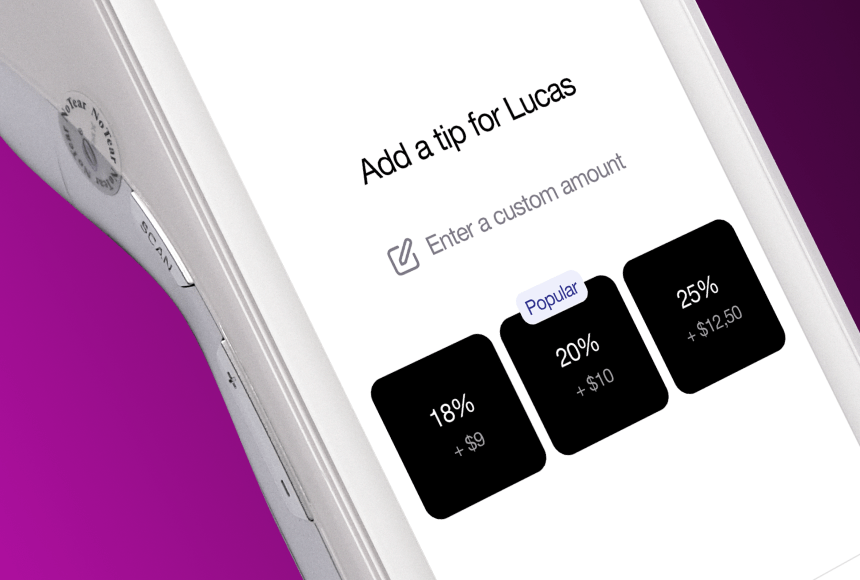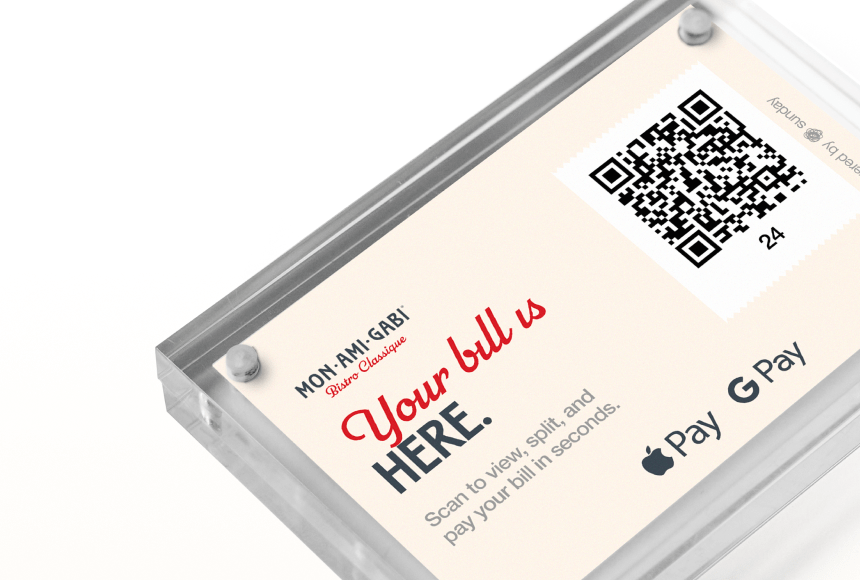
Making Gratuities Flow Smoothly for a More Efficient Operation
Rethinking Tips in a Digital Age
Running a restaurant is both a delicate dance and a high-wire act. You want to offer remarkable dishes and memorable service, but you also need to manage costs, stay ahead of trends, and keep your team motivated. Add the complexities of handling tips—counting, distributing, ensuring fairness—and life behind the scenes can get hectic. That’s why many restaurants are embracing digital solutions for gratuities. According to the National Restaurant Association, nearly 50% of diners say they’re more likely to tip generously if the process is simple and transparent (source).
Moving away from cumbersome cash-based tip systems can ease stress for managers, free up staff time, and give your operation a modern edge. But what does “digitalizing tips” actually look like, and why is it so beneficial for your restaurant? Below, you’ll find insights into how a streamlined, technology-driven approach to tips can strengthen team morale, cut down on errors, and elevate your customer experience.
1. Saving Time and Cutting Out Confusion
Managing tips by hand can feel like running a second mini-accounting department. You’re dividing up cash after each shift, sorting credit card receipts, and ensuring you haven’t shorted anyone. Mistakes or disputes can lead to tension and wasted time. By contrast, digital tips remove much of the manual work from the equation.
- Automated tracking: Solutions that integrate with your point-of-sale (POS) automatically record tip amounts and assign them to the correct staff members. No more rounding issues or sorting through a tangled pile of receipts.
- Real-time visibility: Instead of relying on an end-of-night tip count, you can see live data on how much each server or bartender is earning in gratuities.
- Clear reporting: If a staffer questions their total, you have a digital trail showing exactly how the tips were calculated and distributed.
This simplicity also helps you maintain a calm environment at closing time. When the final table leaves, staff can finalize their shift quickly, rather than wrestling with mental math or rummaging through tip envelopes.
2. Ensuring Fairness and Transparency
One of the most common staff grievances arises from unclear or disputed tip distribution. Did the hosts who helped bus tables get their share? What if the bar staff feels overlooked? Manually allocating tips can be subjective and prone to accidental oversight. Digital tip pooling or tracking establishes a transparent system, reassuring everyone that they’re receiving what they’re due.
When tip distribution is clearly defined—whether you use a pool system, shared tips based on hours, or a percentage-based method—it’s simple to let software do the heavy lifting. Each staff member can see how their share was calculated, which fosters trust. This objectivity also provides a valuable tool for managers who might otherwise get stuck mediating tip-related disputes.
3. Encouraging Higher Tip Amounts Through Seamless Payment
Ever feel awkward nudging customers to add a gratuity? You’re not alone. Many diners want to leave a tip but sometimes forget or feel uncertain about the right amount. Digitalizing tips can help overcome that friction. Platforms like sunday provide a smooth checkout experience that suggests preset tip percentages (such as 15%, 18%, 20%) right on the guest’s phone screen.
- Simple interface: Guests tap to select a recommended tip, removing hesitation or guesswork.
- Shortening the payment step: Diners finalize the bill within seconds, a convenience they often reward with a bigger tip.
- Avoiding the awkward ask: Servers no longer need to hint at gratuities. The system does it automatically in a friendly, unobtrusive way.
According to Restaurant Business Online, restaurants that use digital tipping prompts can see a 12% to 20% boost in average gratuities (source). That benefits your staff’s earnings and morale, while also reinforcing a positive guest experience.
4. Reducing Cash Dependencies and Minimizing Risk
While cash tips may be standard in many venues, they come with logistical headaches. Handling large amounts of cash opens up vulnerabilities like theft or loss. Additionally, trips to the bank become a necessary chore if you want correct change for the start of each shift.
With digital gratuities, you get:
- Secure transactions: Tips flow through PCI-compliant payment systems, lowering the chance of mishandled funds.
- Lower administrative burden: Fewer late-night counts and less pressure on managers to verify that everything matches up at day’s end.
- Better traceability: Every transaction is logged, which helps if you need to investigate any discrepancies or respond to staff queries.
As a bonus, going more digital can align with broader societal shifts, like guests who carry less cash or prefer contactless payments. Your restaurant appears tech-forward, while also mitigating potential security risks.
5. Streamlining Payroll and Tax Reporting
Calculating and reporting tip earnings for tax compliance can be complicated. The more employees you have, the more potential headaches arise if you’re manually collating tip data. Digital tipping solutions that integrate with your POS or payroll software can simplify this entire process.
- Automatic documentation: Each tip is recorded with a timestamp and staff ID, making end-of-month or quarterly tax filings more straightforward.
- Seamless payroll merging: Tips can be added to an employee’s paycheck or processed independently in a documented manner, aligning with regulations in your region.
- Less guesswork: If local rules require you to track tip credits or minimum wage differences, a digital record keeps you compliant without wrestling with spreadsheets.
This saves time for both managers and accountants, and helps you stay on the right side of any labor laws. Even if the regulations in your area are less strict, keeping digital proof of tips fosters better operational transparency.
6. Enhancing Employee Satisfaction and Retention
Offering staff a digital tipping solution might not seem like an immediate benefit to them—until they experience it firsthand. An efficient, transparent system means no more bickering over missed envelopes or confusion about how large party gratuities are split. Employees appreciate a system that doesn’t depend on whether a coworker miscalculated or forgot to pass along a portion of the pot.
- Motivation through clarity: When employees see their tip earnings updated in real time, they better understand the link between performance and reward.
- Reduced friction: Removing guesswork about who owes whom fosters a peaceful working environment and a sense of fairness among the team.
- Respect for their time: Wrapping up shifts becomes easier. Staff can often check a dashboard or app to see their tip totals, rather than relying on an end-of-night scramble.
Happy employees tend to stick around. And as any restaurant manager knows, retaining experienced staff can save you the headache and cost of constant recruitment and training.
7. Speeding Up Table Turnovers
Though tips are primarily about staff compensation, digitizing them can also impact your table turnover rate. Consider how often guests wait an extra minute or two to get change or finalize the tipping portion on a card slip. While not huge, these small lags add up in a busy restaurant, especially during peak hours.
With a digital option, a guest can simply scan a code, pay the bill—including the tip—and wrap up. The speed is especially crucial if you’ve integrated payment with QR codes for the entire check. Your diners enjoy a frictionless exit, and your servers can reset the table that much faster. Over the course of an evening, cutting just a few minutes off each table’s checkout can significantly raise total covers served—and, by extension, tip opportunities.
8. Standing Out with Modern Conveniences
Restaurants increasingly compete on more than just food; the overall guest experience matters. Incorporating digital tip functionality positions you as a forward-thinking spot that caters to contemporary lifestyles. Patrons who are used to scanning and tapping for every other purchase in their lives will find your approach refreshingly convenient.
This can also become a marketing angle: highlight the smooth, digital checkout process. Tourists and locals alike may seek out places that let them skip the hassle of fishing for small bills or dealing with multiple transactions. By adopting digitized tips, you embody an ethos of customer-centric innovation, which can differentiate you in a crowded market.
9. Accessible Data for Performance Insights
Diving into the analytics side of tip collection can reveal invaluable information about your restaurant’s operations. For instance, if you’re seeing certain servers consistently earn above-average tips, it might suggest they’re delivering exceptional guest interactions. By identifying these patterns, you can replicate what works—through training or staff mentorship—across the entire team.
- Identifying peak tipping hours: Notice if tips spike during weekend brunch but lag on weekday dinners. That might guide how you staff or run promotions.
- Tie tips to menu data: Understanding which items or upsells lead to higher checks could help you refine your sales strategy.
- Measuring retention strategies: If you introduce a new training program or staff incentive, watch if tip amounts shift. Data can validate your managerial decisions.
When you harness these insights, you’re not just simplifying tip distribution—you’re tapping into a real advantage for refining your overall hospitality approach.
10. Strengthening Manager Control Without Hovering
Let’s be honest: as a manager, you need to keep tabs on how things run, but you don’t want to micromanage every minute detail. Digital tipping helps you strike that balance. You can see high-level numbers and detect any anomalies—like an unusually low tip night for a usually high-performing server—without constantly interfering.
If an issue does arise—say a customer disputes a tip—your digital logs offer a clear record. You can resolve problems quickly and fairly, maintaining trust with both diners and staff. Meanwhile, by stepping out of daily tip calculations, you gain time to focus on bigger priorities, whether that’s refining your menu or strategizing the next special event.
Turning a Necessary Process into a Competitive Edge
For many restaurants, tips have always been an integral part of compensation—an expectation for front-of-house staff and a hallmark of American dining culture. Yet the process behind them has often been messy: cash piles, tracking spreadsheets, late-night arguments over a few missing dollars. By digitizing tips, you elevate an outdated system to match the efficiency and clarity of modern hospitality.
From ensuring staff morale to mitigating financial risks and ultimately offering guests a frictionless dining experience, digital tipping delivers benefits that extend well beyond the actual gratuity calculation. If you’re already adopting contactless payment, adding digital tipping is a logical step that can deliver significant operational gains. Even if you’re just beginning to explore new tech, the transformation can happen gradually—start with a test shift or a pilot group of servers to gather feedback.
Whichever route you choose, keep your team informed. Present the “why” behind going digital: less stress, faster table turnovers, accurate tip pools, and potential for higher tips. Listen to their concerns about technology or tipping norms, and adapt your approach accordingly. The result is a system that works in harmony with your restaurant’s culture and goals.
Ultimately, the shift to digitized tips is about making your life easier as a manager, while also elevating the dining experience for guests and the work environment for staff. In an industry that’s all about memorable moments and personal connections, removing friction from the tip process can be that subtle yet powerful improvement that keeps everyone coming back hungry for more. And in the long run, it’s often these small operational tweaks—done right—that help you stand out in a competitive market, fueling both profitability and satisfaction across your entire establishment.
Find out more today
Drop us your details below and we’ll reach out within the next 24h
More tips means a better service.
More tips mean better guest-experience, and better staff-retention.




